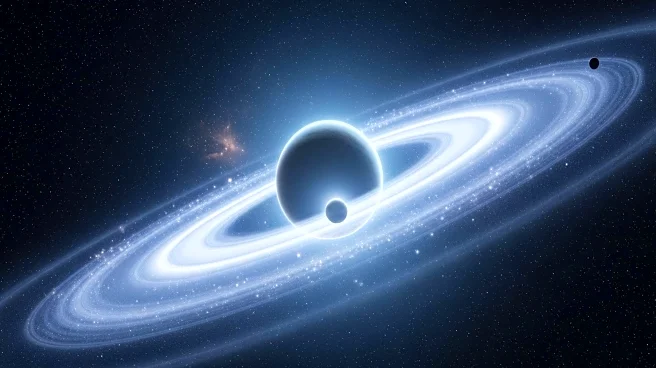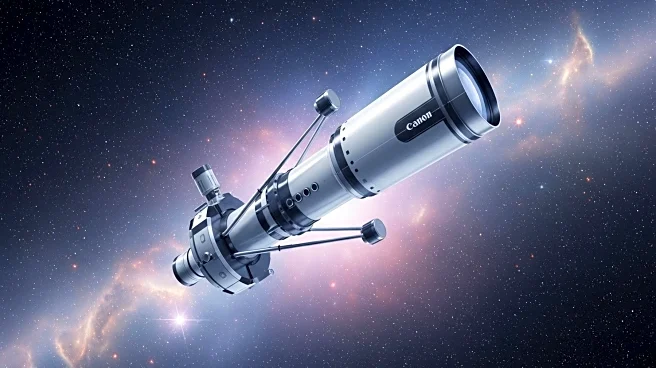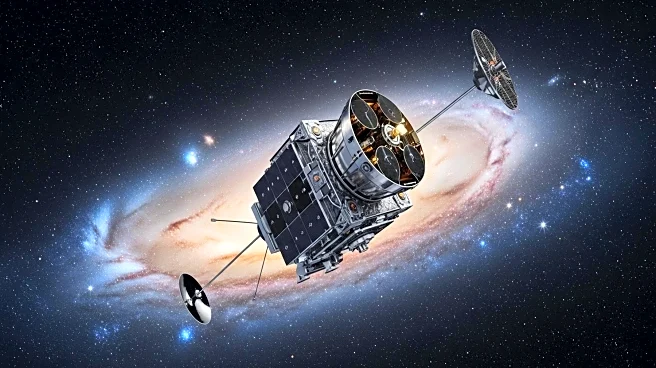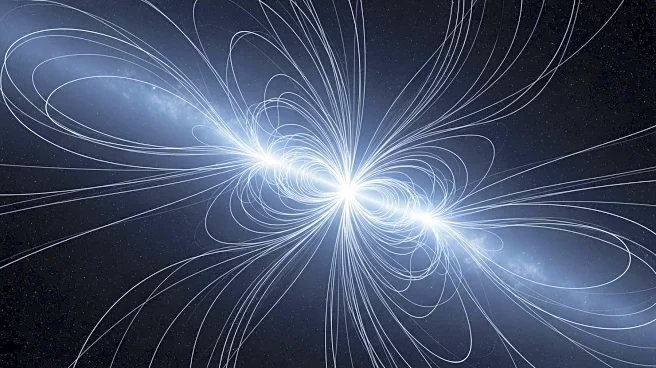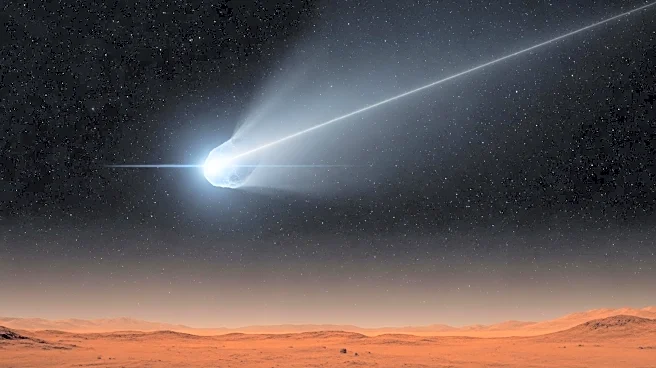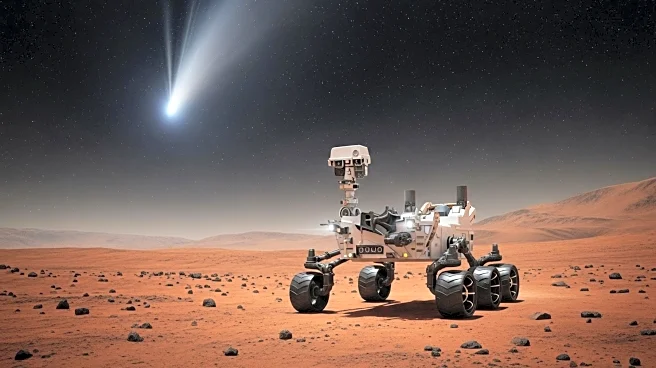What is the story about?
What's Happening?
NASA's James Webb Telescope has provided the first direct measurements of a carbon-rich disk surrounding the exoplanet CT Cha b, located 625 light years away from Earth. The disk contains various carbon-based molecules, contrasting with the water-rich disk around its host star, CT Cha A. These observations offer insights into the formation of moons and planets. The exoplanet orbits 46 billion miles from its star, and the study, published in Science, highlights the divergent chemical evolution between the planet's disk and its star's disk. The Webb Telescope's MIRI instrument was used to analyze the molecular structure, overcoming challenges posed by the star's glare.
Why It's Important?
The discovery of a moon-forming disk around CT Cha b is crucial for understanding the processes involved in the formation of celestial bodies. The presence of carbon-based molecules suggests rapid chemical evolution, providing clues about the origins of our solar system. This research could lead to breakthroughs in planetary science, offering a glimpse into the conditions that lead to the formation of moons and planets. The findings may also inform future studies on the diversity of disks around young planets, enhancing our knowledge of cosmic evolution.
What's Next?
The research team plans to conduct a comprehensive study of nine disks using the James Webb Telescope to further explore the diversity of physical and chemical properties. This will help clarify uncertainties regarding the role of carbon content in celestial formation. The ongoing investigation aims to deepen understanding of moon and planet formation processes, potentially leading to new theories about the development of solar systems.
Beyond the Headlines
The study of CT Cha b's disk raises questions about the fundamental processes that govern the formation of celestial bodies. The differences in chemical composition between the planet's disk and its star's disk suggest complex interactions that may be pivotal in shaping planetary systems. This research also highlights the capabilities of the James Webb Telescope in advancing astrophysical studies, emphasizing the importance of technological advancements in space exploration.
AI Generated Content
Do you find this article useful?
